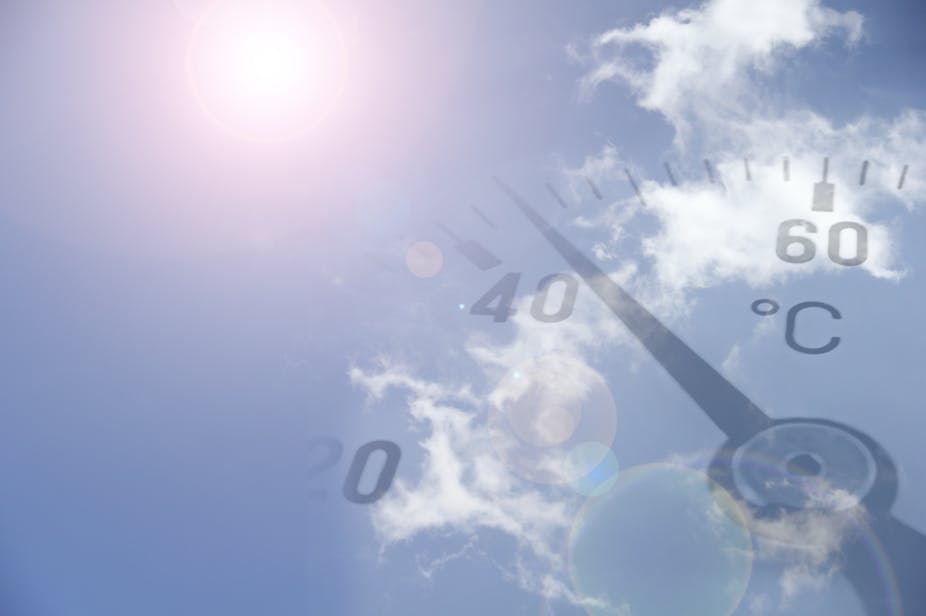It’s official. 2015 was the warmest year ever recorded. In fact, one would need to go back some 130,000 years to experience such high surface temperatures.
This really just confirms what we already assumed. The monster El Niño that began to erupt towards the end of 2014 further amplified the background signal of global warming that is being driven by greenhouse gas emissions. While the forecast is for a diminishing El Niño as we move towards the northern hemisphere summer, it hasn’t done with us yet – 2016 may prove to be even warmer.
Beyond this year temperatures may decrease. For a while. This of course will be seized upon by some people who continue to dispute the Earth is experiencing significant and sustained warming – let alone that humans are primarily responsible for such a trend. People with this attitude have fallen for the “escalator” fallacy; it’s possible to show a short-term decrease in temperature if you pick your start and end times carefully, but looking at the longer-term produces a clear increasing trend.

Really, assessing man-made climate change is about sorting out the signal from the noise. But while the differences we are talking about here are fractions of degrees, the impacts are not negligible.
Global climate change is measured in averages which smear out and can obscure what is in effect local weather and local impacts. Enhanced El Niños cause extreme flooding and drought either side of the Pacific, for instance, with weather going haywire potentially across the entire planet. Coral reefs are threatened, as are regions in the Amazon, and we’re likely to see increased desertification, more extreme droughts and more damaging floods in a warmer world.
At this point it would be easy to become rather depressed. These things will not only directly impact us in the future, but are making their effects known to us right now.
Regions in the UK appear to be experiencing “100-year floods” every few years. Prime minister David Cameron’s fixed grimace of concern yet steely resolve is getting regular outings now. It’s certainly unfortunate that the Environment Agency that is responsible for flood prevention and management suffered a series of very large cuts in funding and staff during this and the previous government. Still, Cameron assured all those involved that things would be fixed. Whatever it takes, whatever it costs.

Of course, the risk is that the current prime minister and those who succeed him will be doomed to play the role of King Canute. This modern incarnation of the ancient fable would involve arguing with the ever-increasing energy content of the Earth’s atmosphere, land and oceans with a range of privatised environmental services and free market solutions.
The fallibility of free markets
The thing is, climate change represents the ultimate failure of the free market, which is unable to effectively price the damage it is doing. Carbon emitted from burning fossil fuels is an externality, which is economics speak for causing a mess that someone else has to pick up the tab for. Carbon trading schemes haven’t successfully reduced emissions as carbon cannot be priced sensibly in the absence of state intervention. Some have argued that a carbon tax would be much more effective, but this would need coordinated international agreements – and the political will to enforce them.
The agreement in Paris last December was a crucial step towards avoiding dangerous climate change. But the pathology is still there. We are still gripped by the need to grow economies and for that growth to be powered by fossil fuels.
Last year there was some excitement about the decoupling of growth from carbon emissions; for the first time in 40 years the increase in global GDP in 2014 was accompanied by a decrease in carbon emissions. Like Paris, this is good news. But the differences here are very small.
If we want to seriously avoid not just 2°C warming but arguably the much more important 1.5°C, then emissions must start falling fast in the developed nations right now. And they must continue to fall every year. At the same time we need massive investment in developing nations, to help them decrease poverty and improve well-being while avoiding the high-carbon mistakes made in the now-industrialised world.
At this point, confirmation that 2015 was the warmest year on record tells us that what we need now are not trends but step changes. In 12 months time we will receive the same memo. We have a rapidly decreasing amount of time to respond to it.

